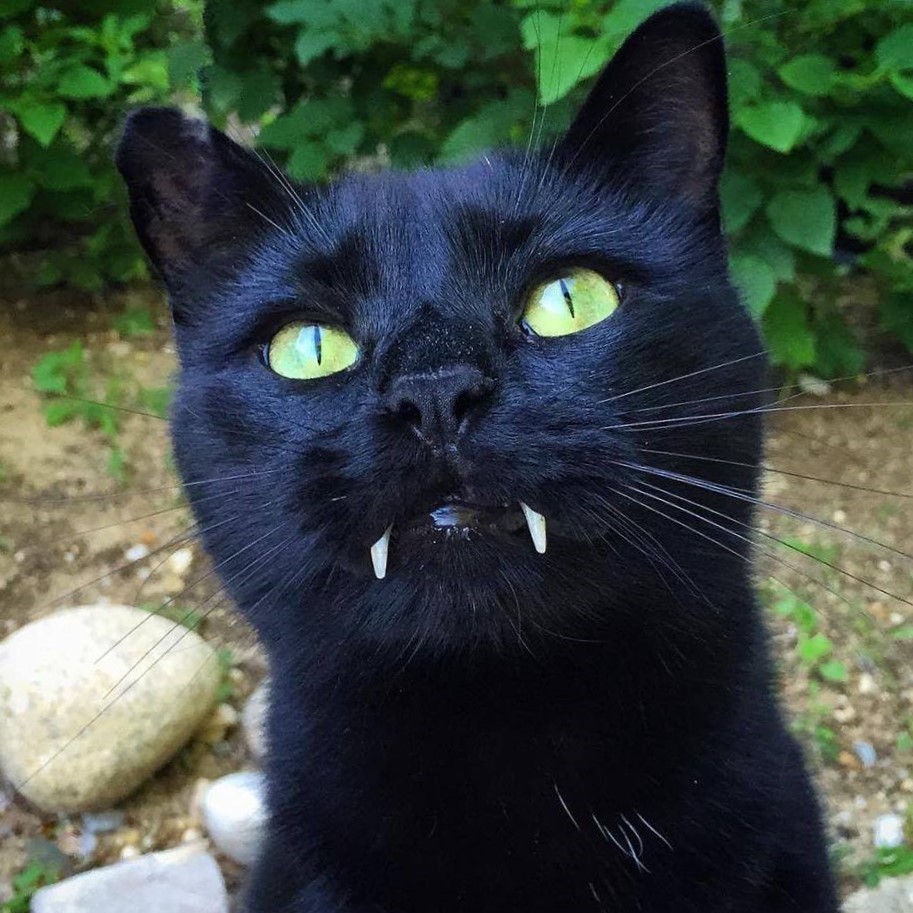Kitten’s lose their baby teeth and replace them with adult teeth between 4-7 months, but do cat teeth fall out if your cat’s fully grown?
The teeth of an adult cat should not fall out if they remain in good health. However, tooth or gum disease may cause cat teeth to rot, both above and below the gum line, and this can lead to poor general health of your cat as he fights bad bacteria.
Quite often poor dental health remains unnoticed and undiagnosed. Take a look at your cat’s teeth – can you see yellowing, plaque build-up, or does his breath smell bad?
If your cat seems to be in discomfort due to potential oral issues, talk to your vet.
On this page we’ll discuss oral care for cats, how we can prevent or reverse it, and really consider why cat teeth fall out.
Cats need oral care, too
Cats seem pretty self-sufficient and independent. They do not require regular daily walks, they can be and are usually left alone for long periods of time provided there is ample food, water, and a litter box nearby, and they do not typically require frequent bath and grooming like their canine counterparts.
But there is one thing cat owners often neglect (not out of malice, of course) and that’s a cat’s oral care.
Have you noticed your cat having foul kitty breath?
Poor dental care, dental plaque, and bad breath may not seem too much to worry about, but you really should. When it comes to periodontal disease in cats, a rotten tooth may be the least of your worries.
In human medical science we know too well periodontal disease and bacteria can lead to all manner of health issues, many leading to organ failure and death if left untreated.
Thankfully there are easy ways to improve dental health in adult cats, and if your cat has yellow teeth or bad breath, you may see a dramatic improvement in only a few weeks – if you keep reading.
If some of your cat’s teeth are rotten (which sometimes isn’t visible beneath the gums), then it’s worth having them extracted by your vet. Cats adapt well, and although inconvenient it’s the better option than their little bodies endlessly fighting bad bacteria.
Brushing your cat’s teeth
Now, it is not easy to imagine your kitty cat letting you brush his teeth. It’s hard enough to brush a dog’s teeth, and pretty much all cats will object to having a toothbrush in their mouth.
If you’re lucky enough to have a cat who enjoys a good tooth brushing then you have nothing to lose and lots to gain with a weekly cleaning session.
For the rest of us, we need to turn to other options.
Feline Greenies – Good or bad?
Have you ever wondered how Greenies benefit dental health?
Yes, as a certified pet nutritionist so have I.
According to the Greenies website they:
help control plaque and tartar buildup by mechanical abrasion
Greenies, registered trademark of Mars, Incorporated
So that’s not about ingredients at all?
Feline Greenies are said to offer your cat healthy teeth, gums, and minimise bad breath. How accurate the science is behind that I don’t know, so will leave you to decide for yourself.
If your cat seems to have generally good oral health, treats such as Greenies *may* offer some kind of protection, but I wouldn’t bet the dental health of your cat on them.
The power of raw meaty bones
The third option is what I recommend, yet comes with various misinformation from the “science” world. Unfortunately the nature of big companies and their marketing tactics means we are often led down the garden path.
In my experience, both as a pet nutritionist and from seen first hand what our cats suffer on the operating table during teeth extraction under anesthetic, raw meaty bones are the most natural and effective way for a cat (or dog) to retain excellent dental health.
Many of the warnings around feeding bones to a pet are well worth considering. Seeking the advice from any vet who has removed a bone obstruction will tell you why.
Most issues veterinarians tackle with bones are from cooked bones, or inappropriately-sized or weigh-bearing bones.
Feeding raw meaty bones to your cat can be as simple as chicken necks or wings. Both will likely cost less than Greenies, yet with the benefit of providing your cat with excellent protein from meat and nutrients from bones.
The gnawing action, just like the “mechanical abrasion” of Feline Greenies, is what will keep your cat’s teeth free from tartar build up, leaving them with a set of pearly whites.



Leave a Reply